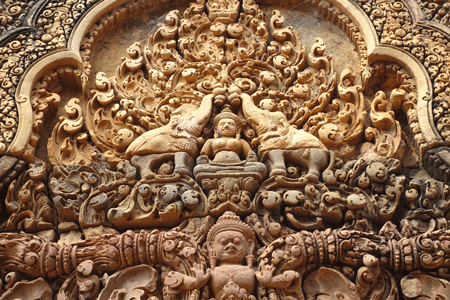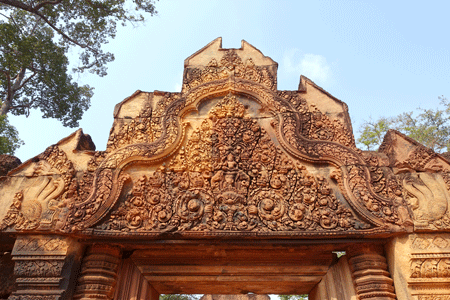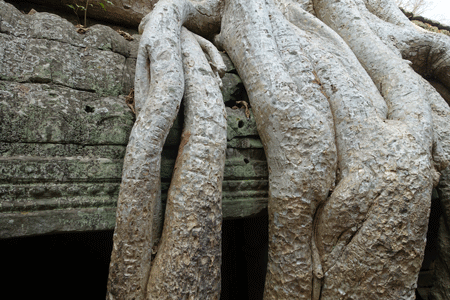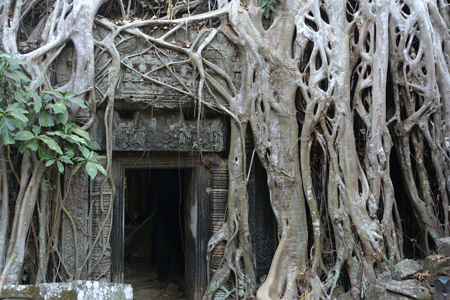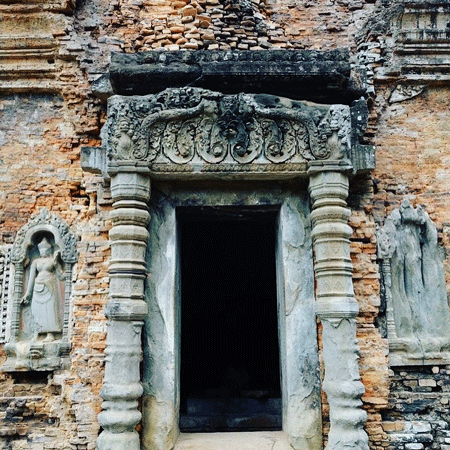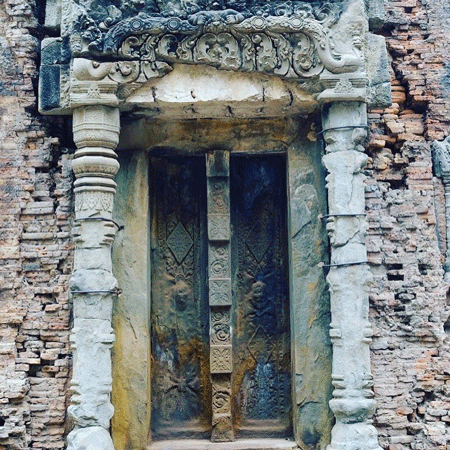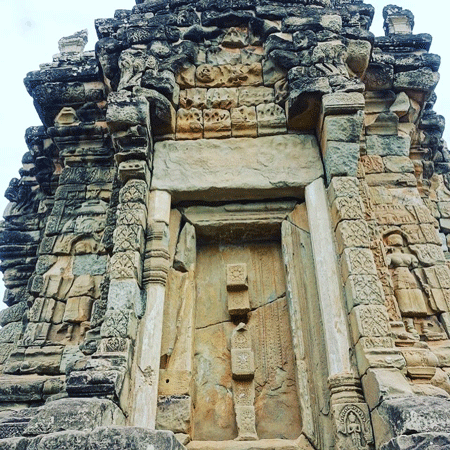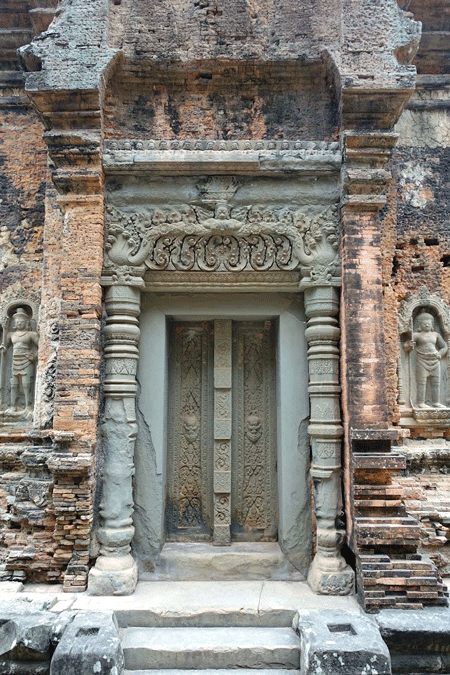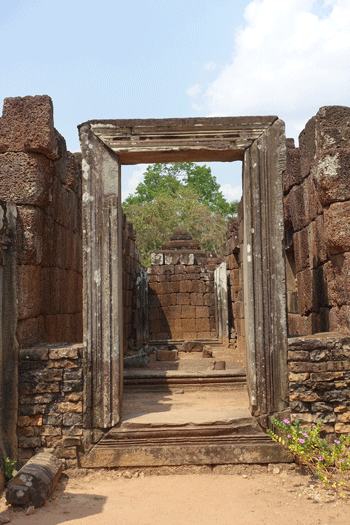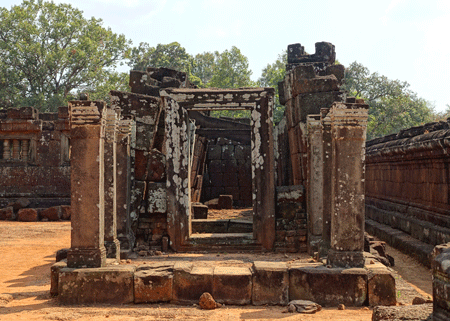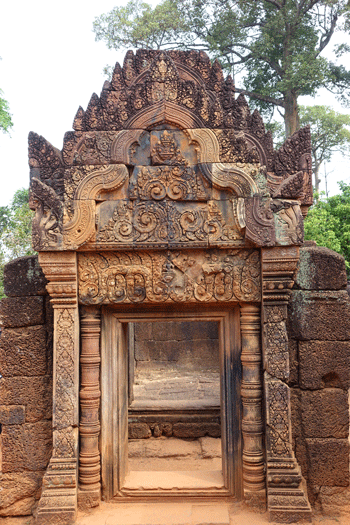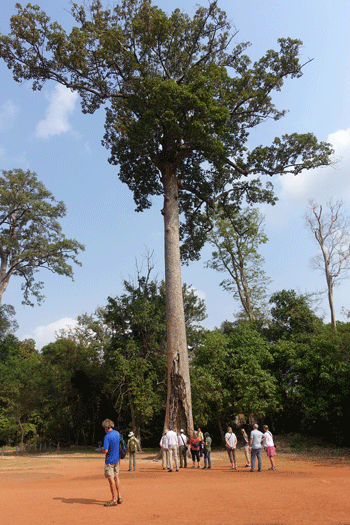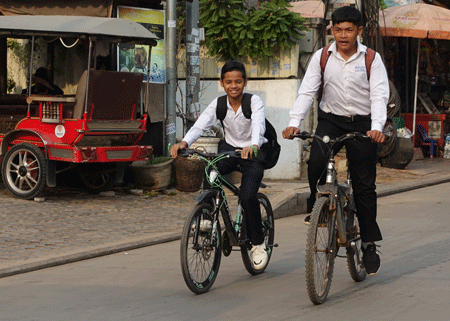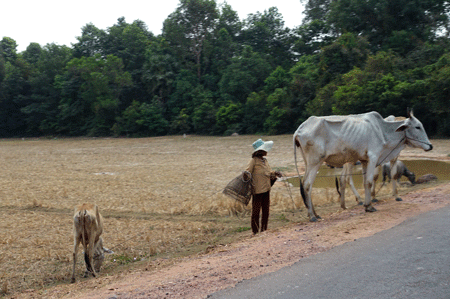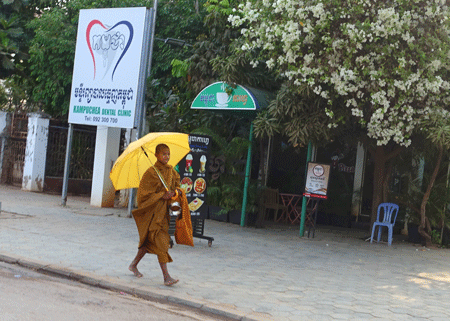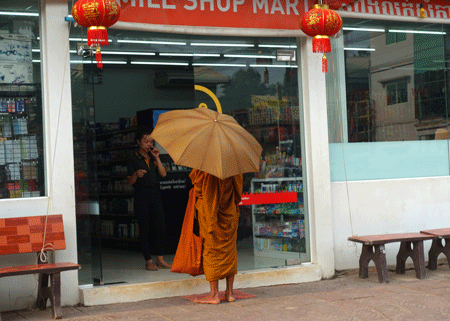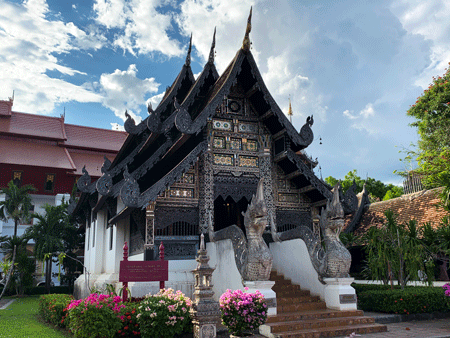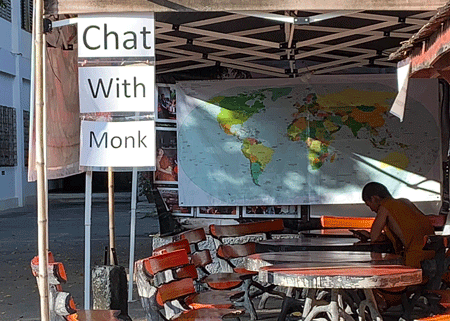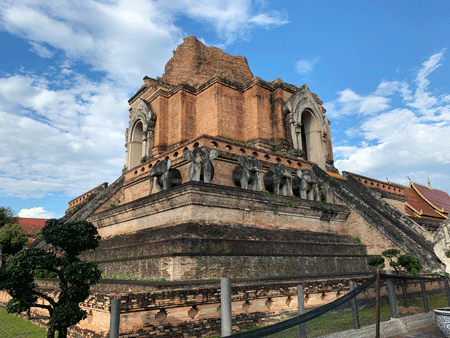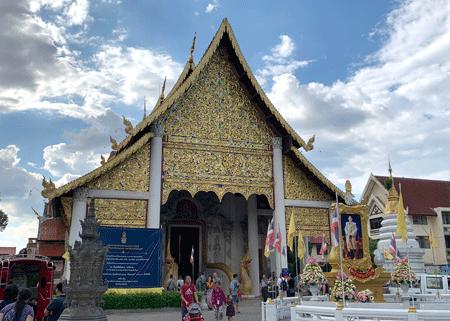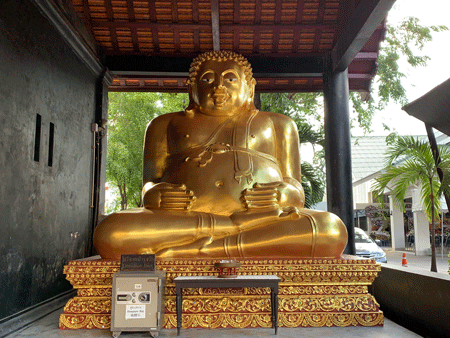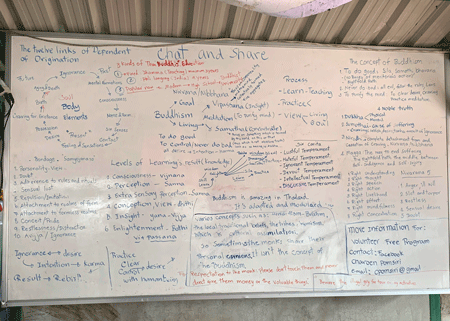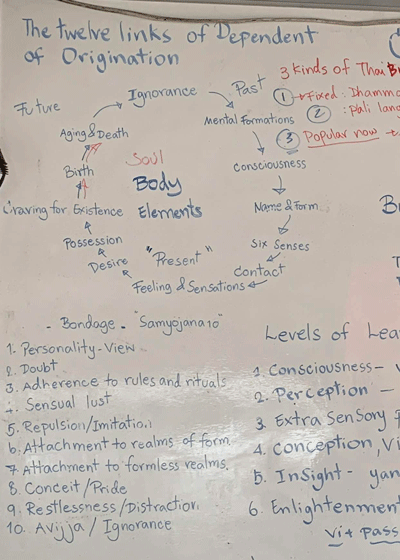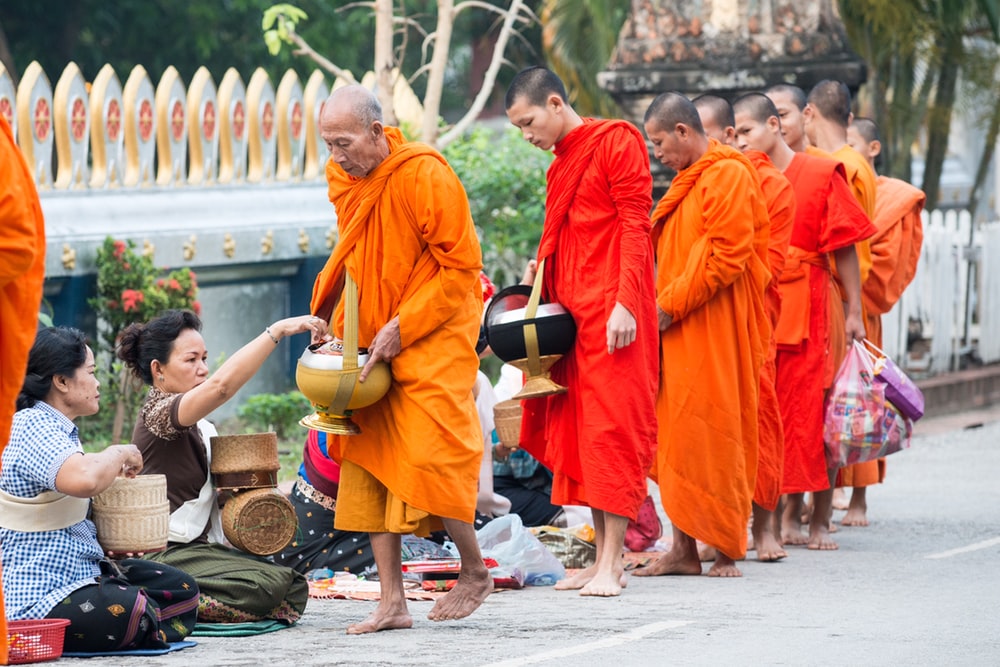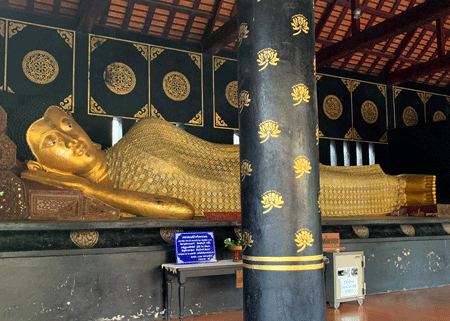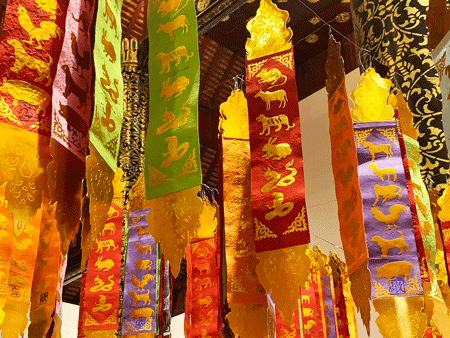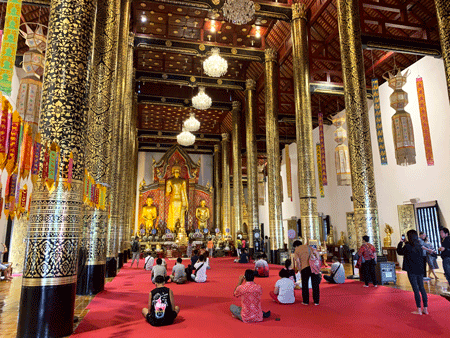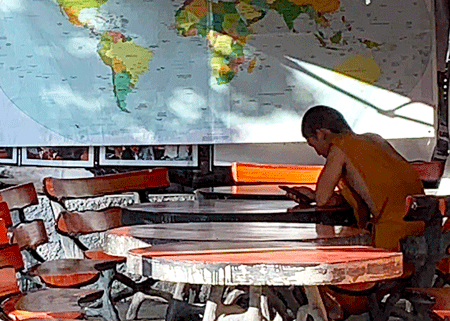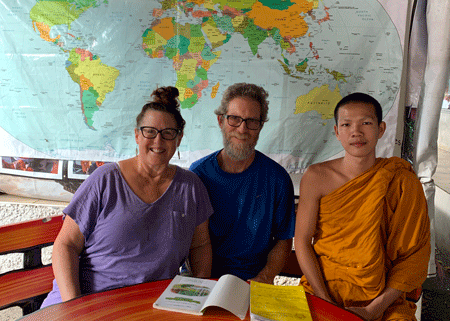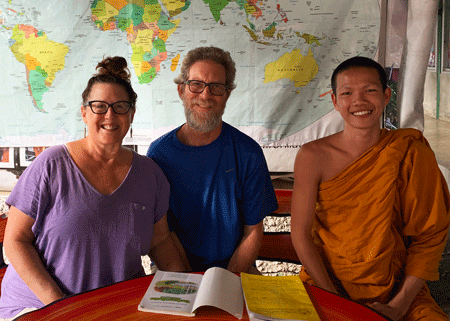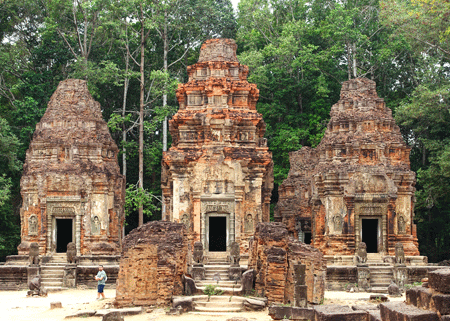
Posted February 26, 2020
The Shampoo Mantra
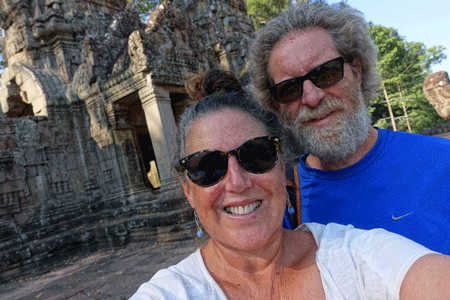
Lather, rinse, repeat. After 35 years of marriage, I just learned that my husband, Steve, actually lathers, rinses, and repeats. I thought everyone knew that those instructions are just to sell more shampoo. Right? Or maybe it’s me and I have bad hygiene. I never “repeat”. Or maybe it depends on how often you shampoo, or how dirty your hair gets?
Yes, traveling long term with very limited supplies you learn some new things, like how much shampoo someone really uses.
Anyway….
The Bathroom Sink
As I hand-washed my shirt, bra, and underwear in the hotel bathroom sink for the sixth day in a row, kneading and swirling to get adequate suds, that phrase, “Lather, Rinse, Repeat”, popped into my head and stuck. It’s so blazing hot and humid in Cambodia that after only an hour (or less) in the great outdoors, it’s necessary to strip down and wash out everything that was touching your body. And I mean everything. It’s the kind of hot and sweaty where you can’t even stand yourself.
Wat Explained
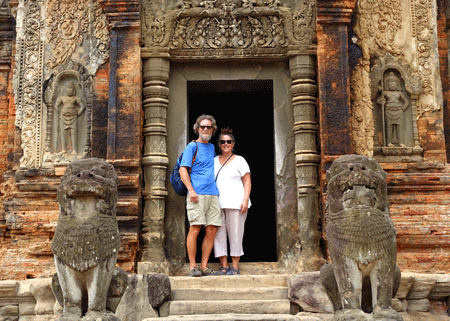
Angkor Wat is the most famous of the ancient Khmer temples in Angkor Archeological Park, and a Unesco World Heritage Site. The word “Wat” is borrowed from Sanskrit meaning ‘enclosure’. The term has varying meanings in different regions, sometimes referring to a specific type of government recognized or large temple, other times referring to any Buddhist or Hindu temple.
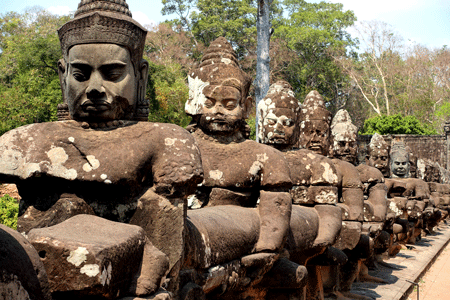
Over a week’s time we visited eighteen Wats throughout the greater Siem Reap region, some as close as a fifteen minute drive, others as far away as a one and a half hour drive. Every temple had unique and amazing attributes.
“Pleeeease Buy From Me”
The vendors at each Wat are ruthless in their pursuit to get visitors to buy their wares. Numerous vendors, ages five to fifty, swarm us as we disembark from our Tuk-Tuk (a small, open air “chariot” pulled by a motorbike, very common in SE Asia). Walking the miles of red dirt, dusty temple paths, I hear, “Hi Madame, pleeeease buy from me. Two for one dollar, or five for two dollars”.
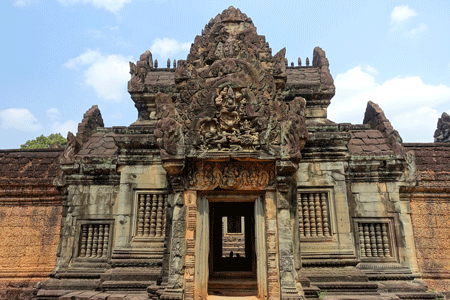
No thank you.
“Maybeeee later. You think about it. You come back and buy from meeee. Come to my shop. You look”.
No thank you.
“Ok, then, you stop by lateeer. You promise? You come to my shop lateeer.”
No thank you.
They walk along with you, sticking like glue and leaning into your face, often blocking your way, and typically repeating their pleas for twenty or thirty feet before finally giving up.
Melting: A Fashion Statement
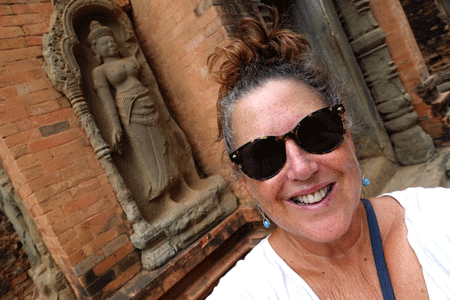
Yesterday it was 99 degrees with 87% humidity. And what’s really bad, as I have mentioned, is that I’m not great in the heat. I show the heat. No poker face for me. After only a few minutes in the strong Cambodian sun, my face is dripping sweat and I look like I’m about to die. There’s no hiding it. I look much worse than I feel. So, one look at my face and the vendors hawking cold drinks come in for the kill. Oh, and the vendors selling fans. I’m a walking, sweating target.
Buyer Beware
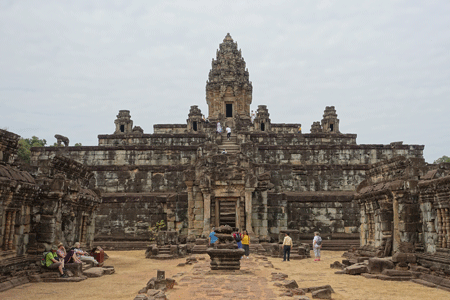
I know these vendors are only trying to make a living. And sometimes I do buy a cold drink (but I already bought a fan in Thailand back in October).
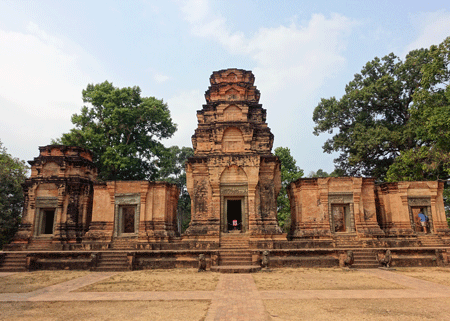
We’ve been warned to not buy from children, since it discourages them from attending school if they can make money off the tourists. Probably half the vendors are children.
A Pretty Picture
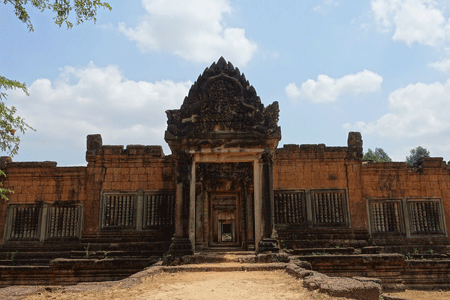
Now that I’ve painted such an enticing picture of visiting the temples of Angkor Archeological Park, including walking miles of dry, dusty paths, being badgered relentlessly by vendors, and sweating more than you thought possible, I must tell you that it’s all worth it.
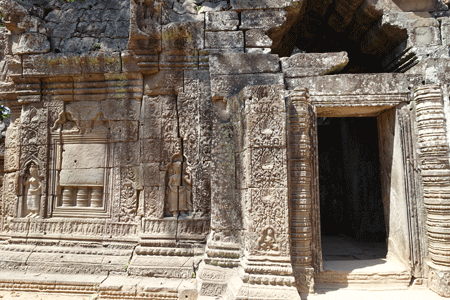
Walking through the ruins, many of which are partially or completely restored, with the history, the artistry, the architectural design, and the sheer magnificence is so worth it. Visiting is worth all the sweat one could muster and all the dust one could walk through. No question.
Time to Prep
Prior to our arrival in Cambodia, I’d read some advice suggesting we visit the Angkor National Museum before visiting the Wats, so that’s what we did. We learned a lot about the history of the ancient Khmer sites, as well as architectural elements to look for while touring the Wats.
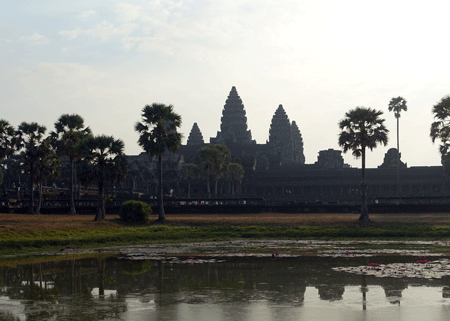
The temples of the Angkor Wat Archeological Park were built long ago, between 900 and 1200 AD. Many were built as Hindu temples, then changed to a Buddhist temple (and vice versa), depending on who was reigning at the time. Unfortunately some beautiful carvings are scratched out due to these changes over time, but most remain intact.
Many temples were not discovered until the 1970’s or later. These hidden gems hold great pride for Cambodia, and many have been (or are being) carefully restored and preserved.
The Plan
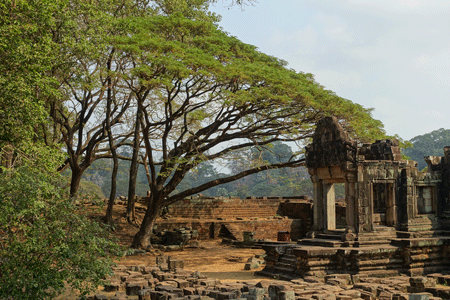
Because of the balmy conditions, our plan of attack was to buy a seven day pass and spread out our visits in small, half-day chunks, rather than going hard all-in for one to three days, like most people do.
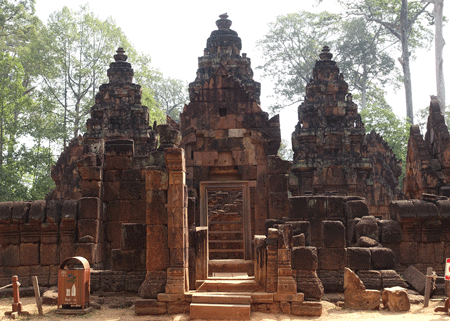
So with our pass in hand, we visited eighteen Wats over six days, taking only one day off to give my knees a break.
There’s tons of steep and uneven stairs, lots of ups and downs over large stone building blocks, and plenty of ducking down required due to low door thresholds of the ancient, much smaller people of the time.
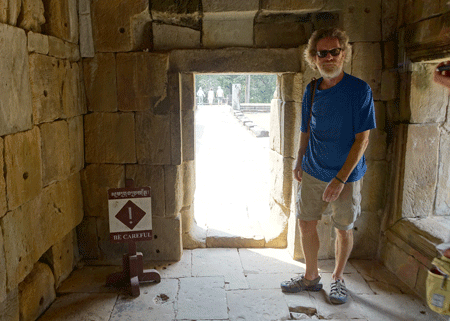
Each day we’d decide on the next day’s itinerary, schedule with Kim, the sweet tuk-tuk driver that practically lives at our small hotel, and off we’d go.
Yeah, sure-sure
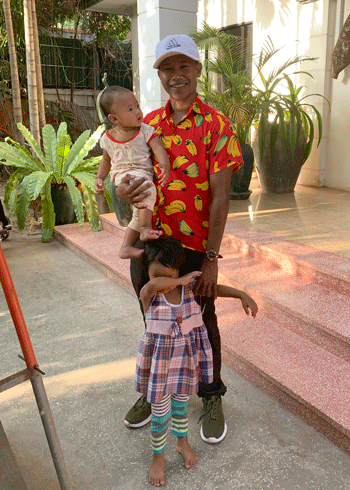
Kim understood more English than he could speak. It worked out pretty well most of the time. One phrase he used quickly and often was, “Yeah, sure-sure”. It was a way to acknowledge and/or agree, but over time we realized it was almost like an automatic response, and didn’t necessarily equal comprehension. Even so, Kim was a great driver and was able to give us good recommendations, making our trips to the Wats memorable and special.
And we especially appreciated his bright, tropical variety of shirts.
Cambodian Tuk-Tuks
Cambodian Tuk-Tuk’s are unique, unlike any we’d seen in SE Asia. Most Tuk-Tuk’s, including Kim’s, consist of a motorbike pulling a covered trailer with two padded bench seats facing one another. They can turn on a dime, but don’t go particularly fast. They are loud and don’t have shock absorbers, so the ride can be pretty bumpy.
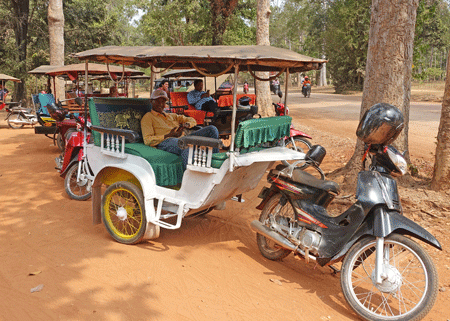
Using the Tuk-Tuk as our primary mode of transportation was great fun. The Tuk-Tuk’s open air nature is heavenly (no exaggeration) as we rumbled down the road, the wind cooling our sweaty bodies. I felt more a part of the city and countryside touring around in a Tuk-Tuk, as opposed to an enclosed van or bus.
Lintels, Doors, and More
Lintels
I’m a devoted lintel fan. A lintel is a structural horizontal block that spans the space or opening between two vertical supports, typically over a door or window. We saw stunning examples of lintels at the Wats.
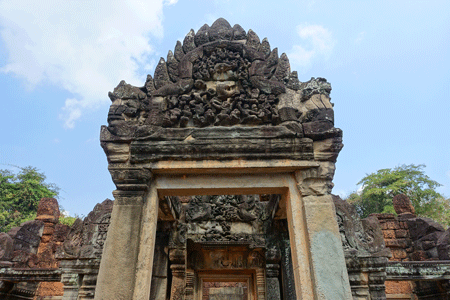
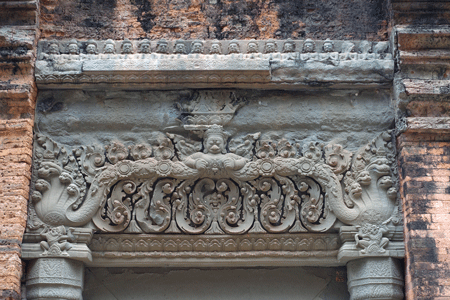
The Trees
Ancient trees wind in, out, and through the ruins of Angkor Wat Archaeological Park.
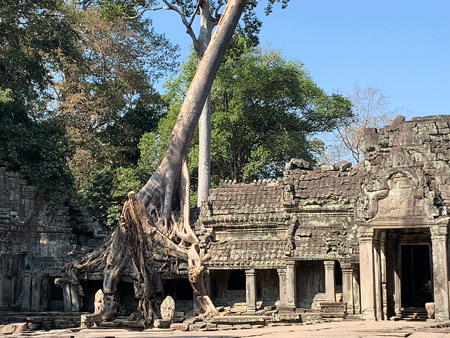
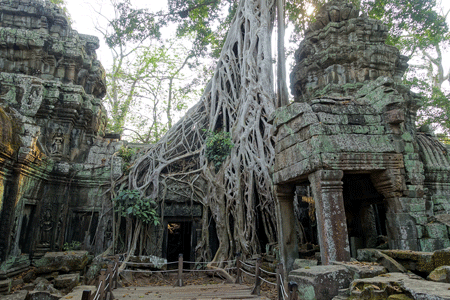
Doors
So many doors to choose from. Sometimes the Wat architects would create a fake door- that’s how much they liked their doors.
Standing Strong
Over and over we saw examples of door frames still standing intact with the surrounding structure crumbled from centuries of neglect, weather, and disuse.
A Rich Red
One of my favorite temples was Banteay Srei. The temple was created using the local ruddy red dirt, giving the buildings and carvings a beautiful red richness. Simply breathtaking.
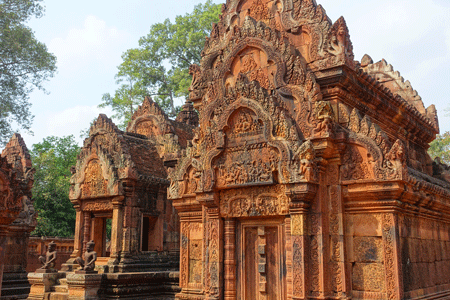
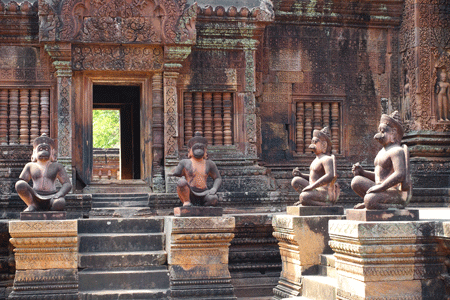
Reliefs
Angkor Wat is home to massive sandstone relief carvings. The carvings are six feet high and span over 600 yards of wall, comprised of several galleries covering the entire outer walls on all four sides of the temple. The carvings are incredibly detailed, representing eight different Hindu religious and historic epics.
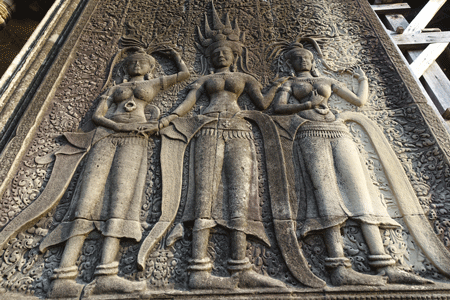
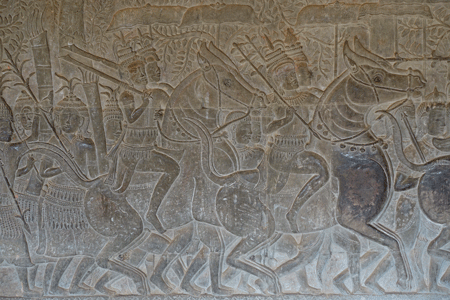
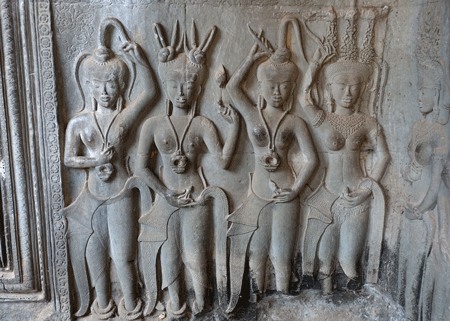
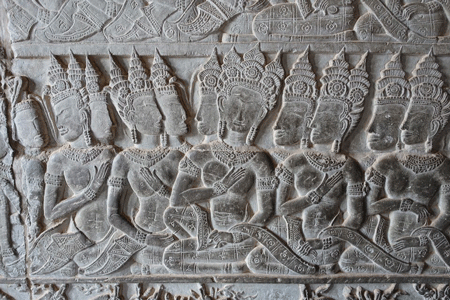
The east gallery is decorated by the most famous of the bas-relief scenes at Angkor Wat, the Churning of the Ocean of Milk, depicting the beginning of time and the creation of the world. This Hindu creation story is revisited over and over throughout the Wats in the park.
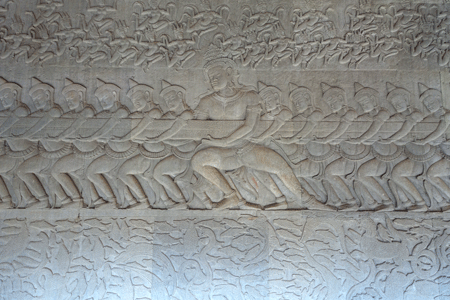
Almost every temple in the Angkor Wat Archeological Park has amazing carved reliefs, including ancient carvings of apsara dancing woman, intricately carved columns, and Sanskrit writings.
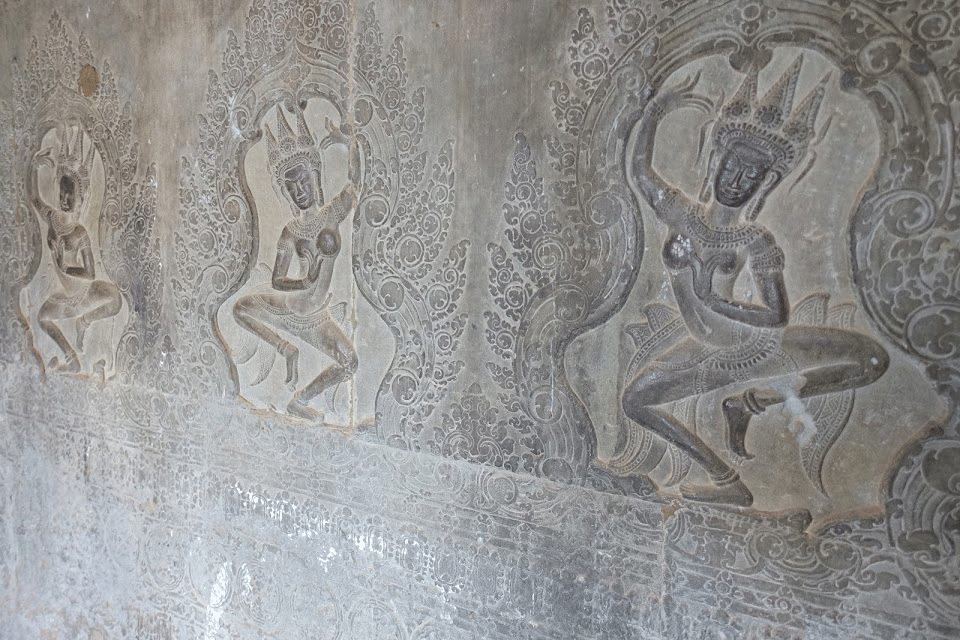
Aspara Dancing Women 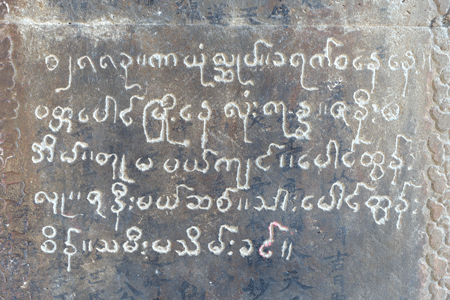
Sanskrit Writings
Entry Gates
Some of the sites have acres and acres of large and sprawling grounds filled with towering trees of many varieties. Such sites have magnificent entry gates on all sides, miles apart from each other.
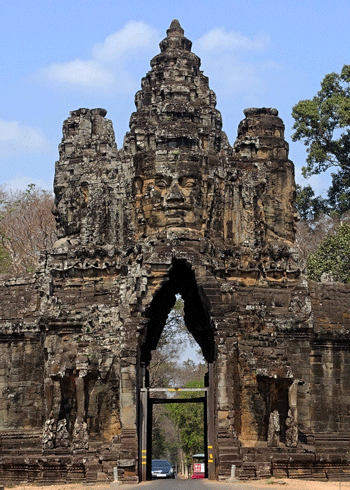
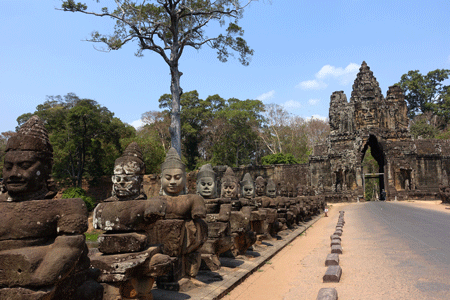
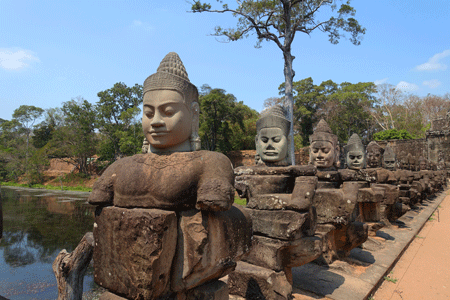
One side lined with good spirits, the other with evil spirits.
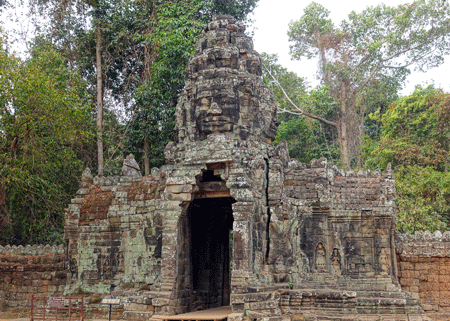
Faces
The Bayon temple is best known for its large number of faces sculpted on its stone towers. While most towers contain four faces, some only have three, and one tower only bears a single face. Amazingly, it’s the same face depicted on every tower.
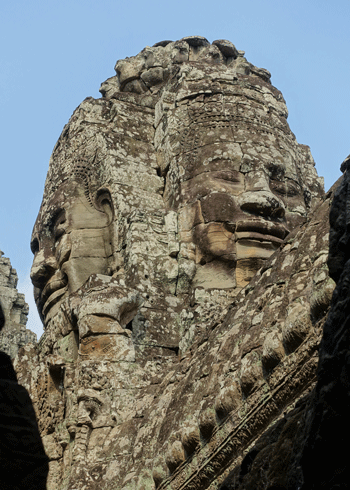
Originally there were a total of 49 towers, decorated with large carved faces looking four directions. Now 37 towers remain with close to 200 faces. The largest faces are just over 8 feet high. It’s a mystery as to what (or who) the faces of Bayon represent. Bayon was first thought to be a Hindu temple, but was later discovered to be a Buddhist temple, which only complicated the speculation.
Whoever or whatever the face represents, I get a peaceful and serene feeling gazing at it. The repetition of that face, over and over on each tower, looking out in multiple directions to the jungles beyond the temple grounds is unforgettable.
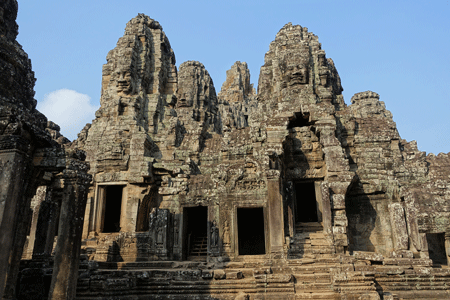
Wins and Losses
Wins
Finding an absolutely lovely hotel, with a pool, complimentary breakfast, and helpful hosts for $22 a night.
Seeing Cambodian life from a Tuk-Tuk. Lots of school kids riding bikes and the occasional cow.
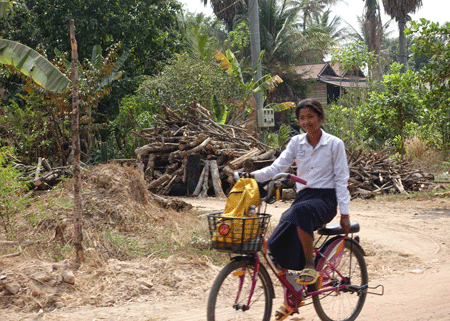
Seeing monkeys in the wild at several temples. Mom & dad, teenager, and baby monkeys playing, grooming, and hanging out.
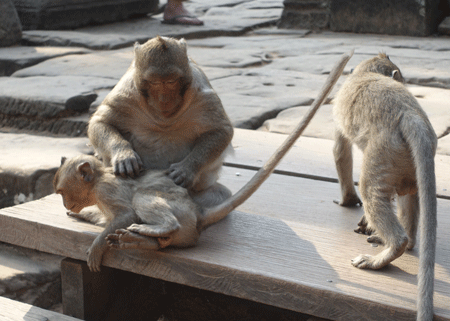
No mosquitoes to speak of- definitely unexpected. No need for the deet!
Close up encounters with water buffaloes. ❤️
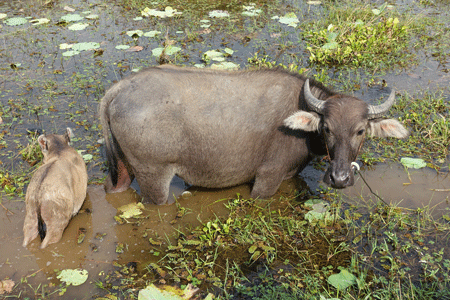
Uncrowded temples due to tourism downturn as a result of Covid-19. Bummer reason, but good for us.
Being back in a country with plenty of monks. I love seeing the monks going about their day.
Losses
Spending more money in Cambodia than we’d budgeted due to Angkor Wat Park fees, daily Tuk tuk tours, and elevated food prices in town. Still cheap overall, just not as cheap as we’d expected.
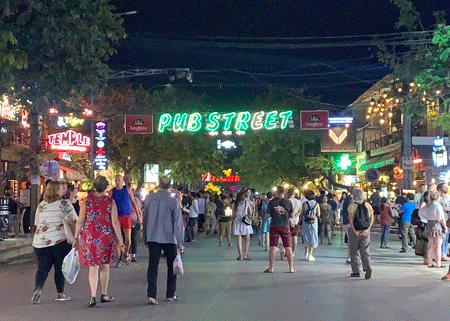
Pub Street: who could have guessed Cambodia would have a major party street named “Pub Street”? Touristy and party-centric. Not our scene, although we did find some good restaurants.
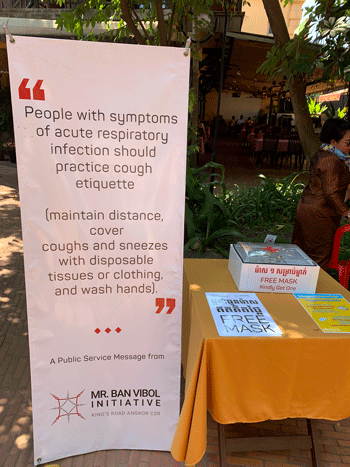
Having to be more and more cognizant of Covid-19 developments. We’ve talked with several fellow travelers that have had their flights cancelled (connecting through Hong Kong, for instance) or are otherwise making travel adjustments. As noted in my last post, we’ve decided to head to the islands in southern Thailand for two weeks (instead of a month) and added fifteen days in Spain en route to home (rather than visiting Laos, Malaysia, or Bali). We’ll be lighting in Seattle on March 18 and couldn’t be more thankful for the amazing adventures we’ve had so far.
